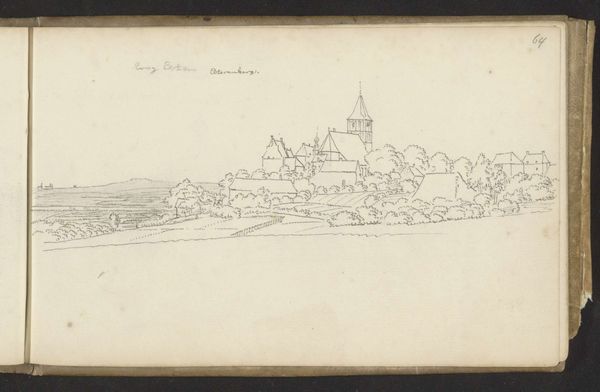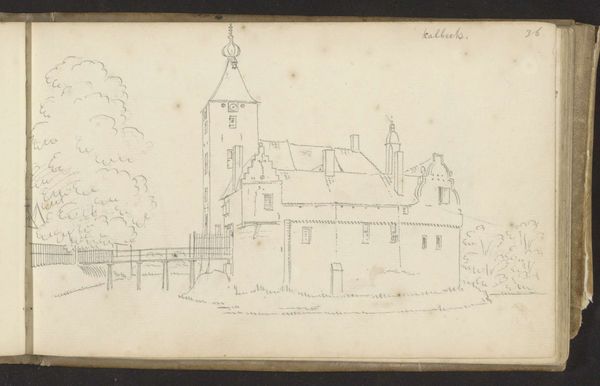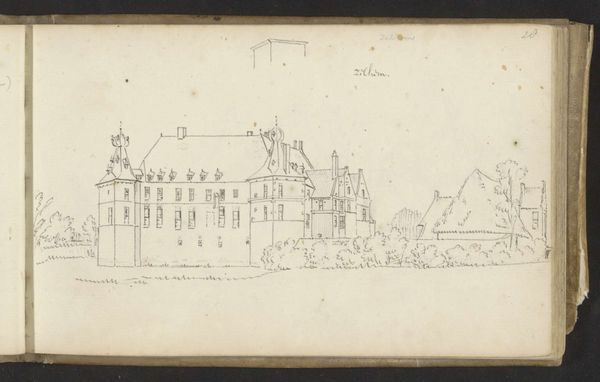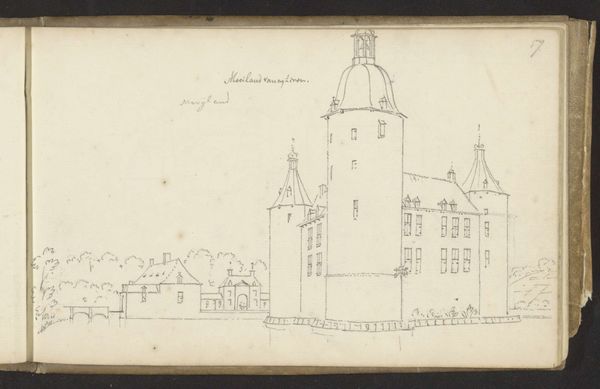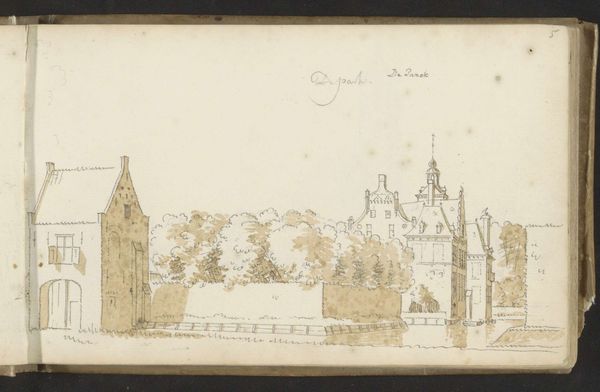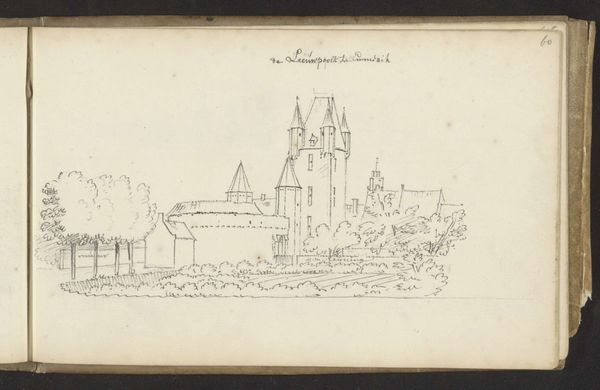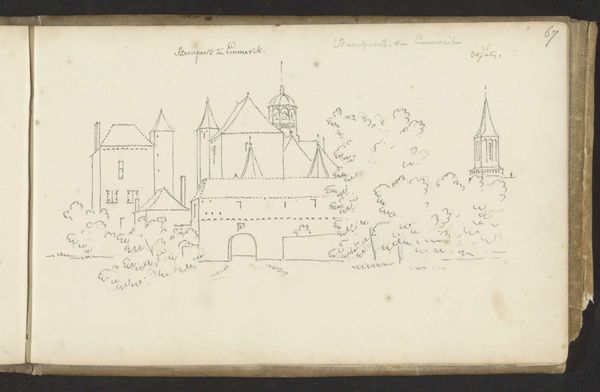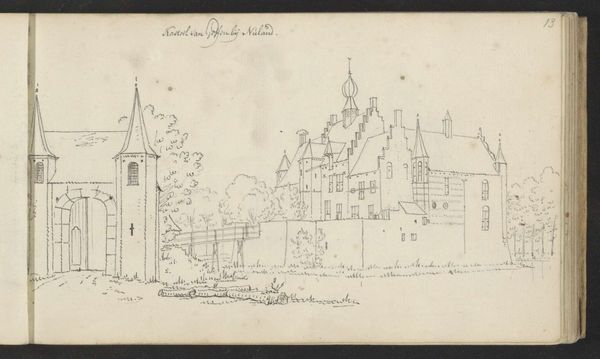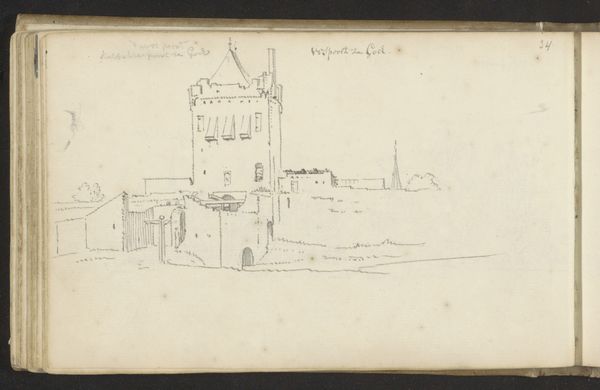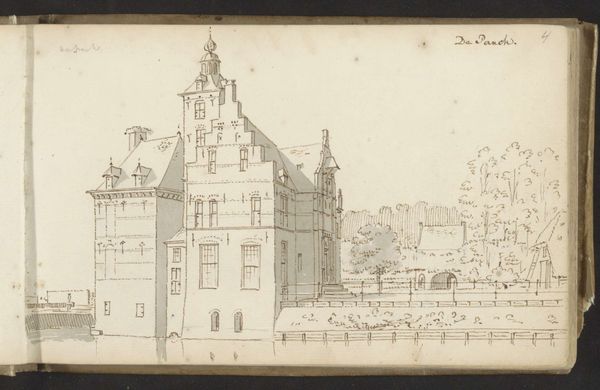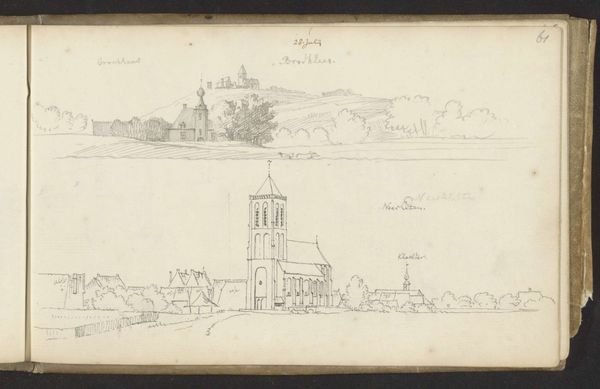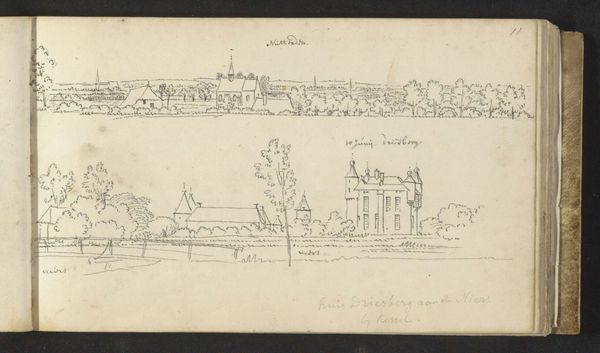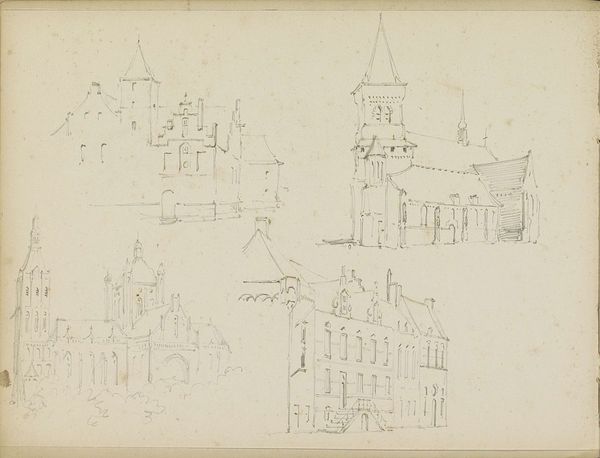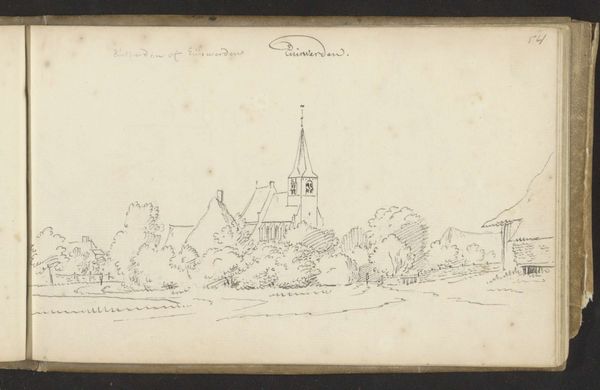
drawing, paper, ink
#
drawing
#
baroque
#
dutch-golden-age
#
landscape
#
paper
#
ink
#
line
#
cityscape
Copyright: Rijks Museum: Open Domain
Curator: This is Abraham de Haen the Younger’s “Kasteel Bijland te Herwen,” made in 1731. It’s a delicate drawing in ink on paper. What’s your initial take on it? Editor: Well, it strikes me as quite peaceful. The simplicity of the lines, the quiet depiction of the castle… it’s a serene scene, isn’t it? Almost nostalgic. Curator: Nostalgia plays a huge part, especially if we examine the paper and ink available to de Haen. Paper was becoming more widely available but still retained its value as a medium for recording and documenting. Ink, similarly, represents the importance of the written word and its association with knowledge and power structures of the time. Editor: So, you see the material suggesting more than just a straightforward landscape. I’m thinking about the castle itself. Who inhabited it? What role did it play in the social hierarchy of the time? Depictions like this often romanticize the elite while obscuring the labor and exploitation that supported their lifestyles. Curator: That’s a vital point. These grand estates were indeed the centers of power. Now, let's consider the process itself. De Haen, using simple materials, captures this seat of authority, transforming the castle into a consumable image for a growing market. The materiality reminds us that art, even in its most seemingly straightforward form, has embedded socioeconomic relationships. Editor: Exactly. By reproducing the image and distributing it among other merchants, the drawing, like any good Dutch Golden Age piece, participates in creating a system of prestige. Was de Haen engaging in an act of class commentary? Who was the art made for? Curator: Precisely. We have to question if it reinforces existing hierarchies. Editor: By looking at this through the lens of artistic material and its possible context in 1731 we’re offered much more than the quaint cityscape meets the eye, aren’t we? Curator: It allows us to consider labor, consumption, and power, shifting our focus from mere representation to the mechanisms behind that representation. Editor: Definitely something to consider the next time we admire a seemingly simple drawing.
Comments
No comments
Be the first to comment and join the conversation on the ultimate creative platform.
